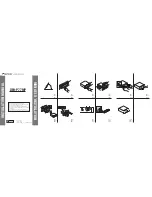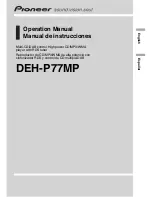
51
ATTO Technology Inc. Diamond Storage Array Installation and Operation Manual
7.3 Zones
Zoning is a collection of related Diamond-VT capabilities supporting flexible Diamond configuration
management configurable via CLI commands in the Command Line Interface mode or in the Advanced
CLI Configuration page in the ExpressNAV interface. Zoning supports security by granting or denying
access between initiators and devices as defined by an administrator.
A zone is a collection of devices which can access
each other. The devices in a zone usually include
one or more initiators, one or more devices, and
one or more paths between the initiators and the
devices.
To set up zones, use the Command Line Interface
(see
Accessing the Diamond-VT
on page 15) or the
Advanced CLI page in the ExpressNAV interface.
Zone CLI commands only take effect after you
enter the ZoneCommit command.
The individual elements are referred to as
device_lun, host_name, port_number and
zone_name as defined in Exhibit 7.3-1.
Exhibit 7.3-1 Definitions of zone configuration entries.
Principles of Zoning
Zoning provides a validation filter for each SCSI
command.
Each zone entry includes a named zone, a host
portion, a port portion and a device portion. The
components of a valid path from a host to a device
satisfy the following conjunction:
<host_name> AND <port_list> AND
device_list>
The zone
is named to identify it from other
zones. It appears as
zone_name
in this manual.
The host portion
defines the valid access path
from a host through a port to a device (LUN),
representing the Initiator ID in a SCSI
environment or the World Wide Port Name in a
Fibre Channel environment. It appears as
host_name
in this manual.
The device portion
defines the LUN(s)
participating in the zone. It appears as
device_lun
in this manual.
The port portion
defines the Fibre Channel or
SCSI port in the Diamond-VT. It appears as
port_n
in this manual.
The process:
Each command received by the
Diamond-VT is parsed to determine its host/HBA
identifier, its port number and the target LUN,
forming the zone nexus. This zone nexus is
looked up in the defined zones table. If the zone
nexus is present, the operation continues; if it is
not found, the command is rejected with the
appropriate status and sense data.
Two zone configurations accessed through the
Command Line Interface regulate zoning:
The Planned configuration
is a work-in-process
configuration used to build or edit the desired
configuration. The Planned configuration does
not control I/O access until it is transformed into
the Active Zone Configuration via successful
completion of the
ZoneCommit
command.
Other than as a site for zone configuration editing,
the Planned configuration has no impact on the
Active configuration or the Diamond-VT.
Changes to the Planned configuration may be
made without considering synchronization with
other configuration commands.
Use the
ZoneClearAll
command to clear the
Planned configuration.
If, while working in the Planned configuration,
you decide you want to negate that configuration
and edit the Active configuration, use the
ZoneRetrieve
command. The information from
device_lun
The LUN of the RAID drive
host_name
In a Fibre Channel environment, the
WWPN; in a SCSI environment, SCSI
Initiator ID
port_number The Diamond port number (0, 1) for the
data path
zone_name
Alphanumeric or ‘_’, character string less
than or equal to 16 characters long
Содержание Diamond Array VT
Страница 2: ......
Страница 3: ......
Страница 11: ......
Страница 25: ...14 SCSI connections...
Страница 31: ...20 Serial port access...
Страница 57: ...46 CLI configure drives...
Страница 71: ...60 Monitoring reporting...
Страница 89: ...A viii...
















































